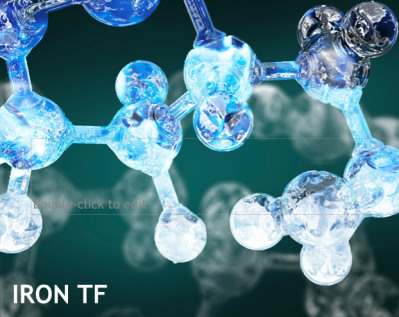Iron nano-structures open up food fortification opportunities
By using a flame aerosol technology researchers from the Swiss Federal Institute of Technology (ETH) in Zurich report that the resulting nano-structures show high iron solubility and low reactivity in foods, making them promising for food fortification applications.
The study, published in the Journal of Food Science suggests that nano-structured iron with magnesium or calcium offer stable, highly bioavailable iron enrichment for foods.
“The nano-structured iron-containing compounds presented here may prove useful for iron fortification of certain foods; they are highly soluble in dilute acid and likely to be well absorbed in the gut but cause less severe colour changes than iron sulphate when added to difficult-to-fortify foods,” stated the researchers, led by Dr Florentine Hilty of the Swiss Federal Institute of Technology (ETH) in Zurich.
“Like elemental iron compounds, the nano-structured compounds investigated here are generally more stable in food matrices than water-soluble iron compounds. But in sharp contrast, the former show very high solubility in dilute hydrochloric acid and are likely to be well-absorbed,” they added.
Deficiency
The authors stated that iron deficiency affects approximately 2 billion people worldwide. Iron deficient individuals may be susceptibility to infections and the adverse effects of deficiency in pregnancy include increased risk of prematurity and low birth weight and increased infant and maternal mortality.
Hilty and colleagues noted that food fortification can be an effective and sustainable strategy to reduce iron deficiency, but stated that selecting of iron fortificants remains a challenge.
The fortification of foods with iron poses several challenges, depending on the types of iron used. Water-soluble iron sulphate offers the advantages of providing high bioavailability, but the disadvantage of adversely affecting the colour of the resultant product, whereas water-insoluble (acid-soluble compounds) elemental iron or iron phosphate offers greater good sensory properties and stability but poor bioavailability.
However, for acid-soluble compounds, solubility in dilute hydrochloric acid is a good predictor of in vivo bioavailability.
Solubility in dilute hydrochloric acid, and therefore bioavailability, of poorly soluble elemental iron compounds can be improved by reducing their particle size
The researchers investigated the possibility of producing nano-structured iron oxide that was highly bioavailable and stable. Magnesium or calcium was added to iron oxide alone to increase solubility in dilute hydrochloric acid and maintain good sensory characteristics.
Nano- fortification
The researchers reported iron solubility of nano-structured iron oxide with magnesium or calcium was higher than that of pure iron oxide.
The addition of only small amounts of magnesium or calcium to iron oxide increased the solubility in dilute hydrochloric acid compared to pure iron oxide, with iron solubility reportedly increasing from less than 80 percent for pure iron oxide to about 90 percent with the addition either magnesium or calcium.
Further addition of magnesium or calcium was reported to marginally improve the solubility, while very high amounts of led to excellent solubility in dilute hydrochloric acid. However, the authors stated that for food fortification, compounds with low additive concentration, and thus high iron content, were of primary interest.
Hilty and co workers also observed the novel food fortificants consisting of magnesium- and calcium-containing nano-structured iron oxides to show better sensory characteristics in yoghurt and milk-based polyphenol-rich foods than iron sulphate.
Promising for food
“The combination of high iron solubility and low reactivity in foods makes these flame-made nano-structured compounds promising for food fortification,” concluded the researchers.
They added that the fortificants may be particularly useful for fortification of light-coloured foods, such as wheat flour or extruded rice, but noted that further studies will need to be done “to determine the performance of these novel compounds when added to fortified foods.”
“We feel it is worthwhile to further investigate these compounds to determine if they have advantages compared to elemental iron and other commonly used iron fortificants,” said Hilty and colleagues
Source: Journal of Food Science
Published online ahead of print, doi: 10.1111/j.1750-3841.2010.01885.x
“Incorporation of Mg and Ca into Nanostructured Fe2O3 Improves Fe Solubility in Dilute Acid and Sensory Characteristics in Foods”
Authors: F.M. Hilty, J.T.N. Knijnenburg, A. Teleki, F. Krumeich, R.F. Hurrell, S.E. Pratsinis, M.B. Zimmermann













